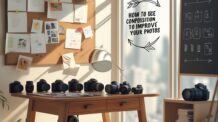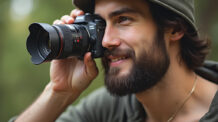Photography is an incredibly rewarding art form and hobby, but many beginners feel intimidated by the perceived costs. The truth is, you don’t need to spend thousands of dollars to start taking beautiful photos. With some smart choices and a clear understanding of your needs, you can begin your photography journey on a low budget and still achieve impressive results.
Understand What Type of Photography You Want to Pursue
Before you start buying gear, it’s important to identify what type of photography you’re most interested in. Are you passionate about landscapes, portraits, street photography, or maybe food photography?
Understanding this helps you make targeted decisions when choosing your equipment. For example:
- Portrait photographers may need a camera with good depth of field control.
- Street photographers might prefer a compact, unobtrusive setup.
- Landscape photographers often look for wide lenses and good image quality in low light.
Start with What You Already Have
Many new photographers overlook the fact that they might already own a great tool: a smartphone. Modern smartphones have powerful cameras and manual controls that allow for learning the basics of composition, lighting, and editing.
Even if your phone is a few years old, chances are it has a good enough camera to get you started. The goal is to focus on learning the art of photography before upgrading to expensive equipment.
Consider Buying a Used Camera
If you’re ready for a dedicated camera, consider purchasing a used one. Reputable websites and stores often sell refurbished or second-hand cameras that are fully functional and significantly cheaper than new models.
Look for entry-level DSLR or mirrorless cameras such as:
- Canon EOS Rebel T6/T7 (DSLR)
- Nikon D3500 (DSLR)
- Sony Alpha a6000 (Mirrorless)
These models are beginner-friendly and offer excellent image quality without breaking the bank.
Choose a Versatile Lens
If you’re purchasing a camera body, choose a kit that comes with a lens, typically an 18-55mm zoom. This lens is versatile enough for most situations and allows you to learn various techniques without needing multiple lenses.
As you improve, you might invest in a “nifty fifty” (50mm f/1.8 lens), which is affordable and great for portraits and low-light photography.
Don’t Overlook Free Learning Resources
One of the best things about learning photography today is the wealth of free knowledge available online. YouTube is filled with high-quality tutorials covering everything from camera basics to advanced techniques. Look for channels such as:
- Peter McKinnon
- Jessica Kobeissi
- Mango Street
- Tony & Chelsea Northrup
In addition to video content, there are blogs, forums, and free eBooks that can teach you how to improve your photography skills without spending a dime.
Use Free or Affordable Editing Tools
Post-processing is a big part of photography, and while professional tools like Adobe Lightroom and Photoshop are fantastic, they come at a cost. Luckily, there are excellent free or budget-friendly alternatives:
- Snapseed (mobile)
- Darktable (desktop)
- GIMP (desktop)
- Lightroom Mobile (free version)
These tools provide robust editing capabilities that will help you enhance your images and understand how editing affects the final outcome.
Take Advantage of Natural Light
Lighting equipment can be expensive, but you don’t need it right away. Natural light, especially during the golden hour (shortly after sunrise or before sunset), can create stunning results.
Practice shooting in different lighting conditions, experiment with window light for portraits, and learn how light affects your images. Understanding light is more important than owning lighting gear.
Practice Composition and Storytelling
The best photographers aren’t necessarily those with the best equipment, but those who can tell a compelling story through their images. Focus on the following composition techniques:
- Rule of thirds
- Leading lines
- Framing
- Symmetry
- Depth
Spend time studying photography books or famous photographers’ portfolios and try to replicate what you see with your own creative twist.
Join Photography Communities
Being part of a photography community, even virtually, is one of the best ways to grow. Join Facebook groups, Reddit communities like r/photography, or photography subforums where you can ask questions, share your work, and get feedback.
Many communities also host free challenges or themes that help you practice and get inspired by others.
Practice Daily with Intent
Even with basic equipment, you can become a great photographer if you practice regularly and intentionally. Set mini-projects like “black and white week” or “10 portraits in 10 days” to stay consistent and motivated.
Document your progress and review your older photos over time. You’ll be surprised how much improvement you can make in just a few months.
Final Thoughts: Passion Over Price
Photography is ultimately about seeing the world in new ways and capturing moments that matter. Your camera is just a tool — your eye, creativity, and willingness to learn are far more important.
Starting with limited resources teaches you to be more creative and thoughtful with your shots. As your skills grow, you’ll know exactly when and where to invest in new gear, making each purchase meaningful and effective.
Now, here’s your illustrative horizontal image for this article. After that, I’ll move straight into writing the next article: “10 Must-Know Tips for Beginner Photographers”




Deixe um comentário